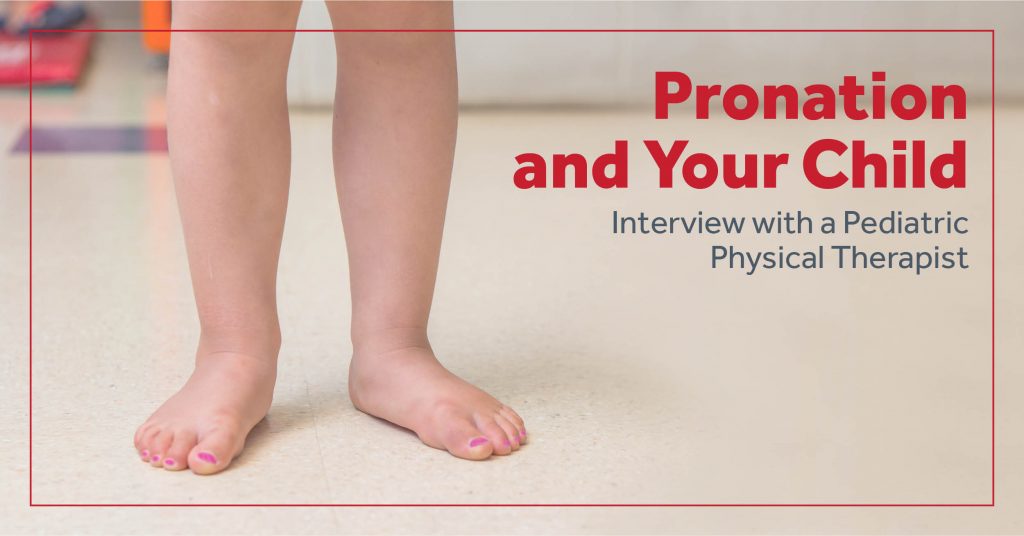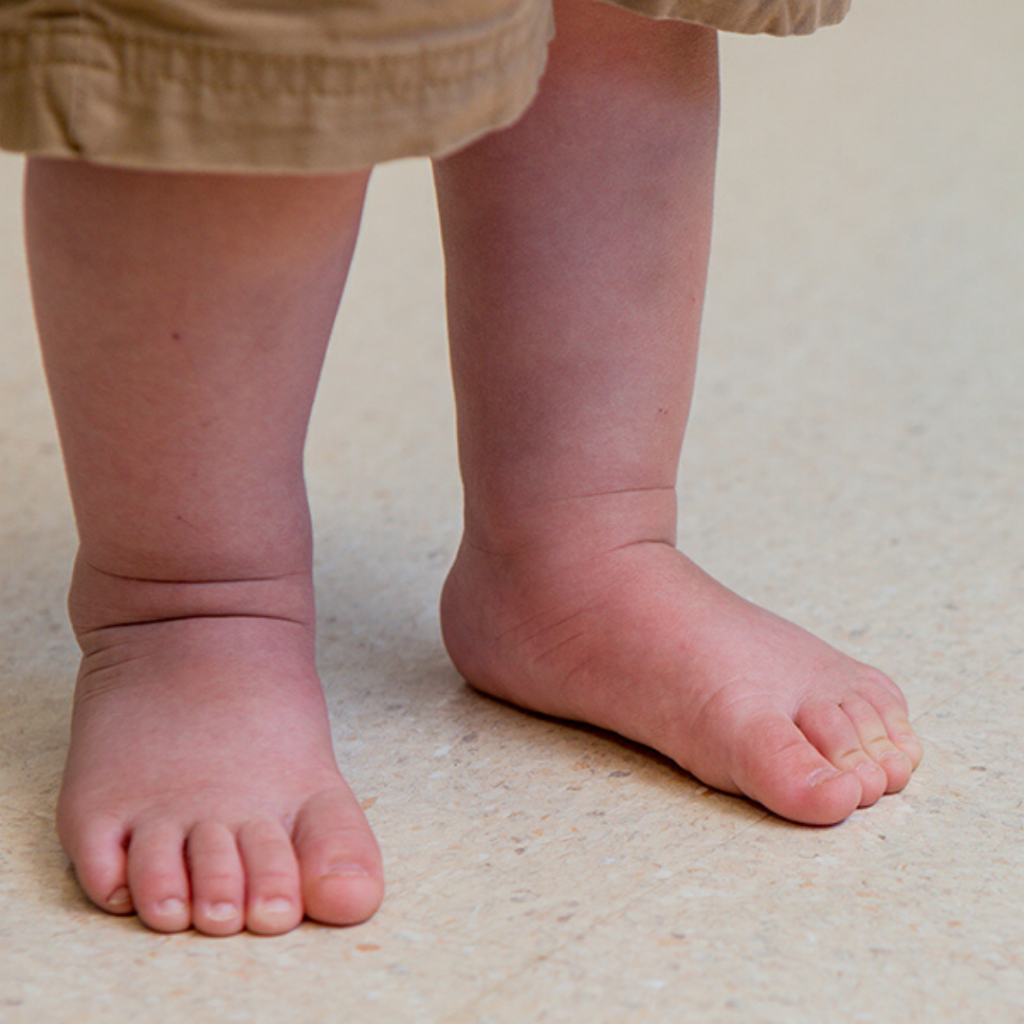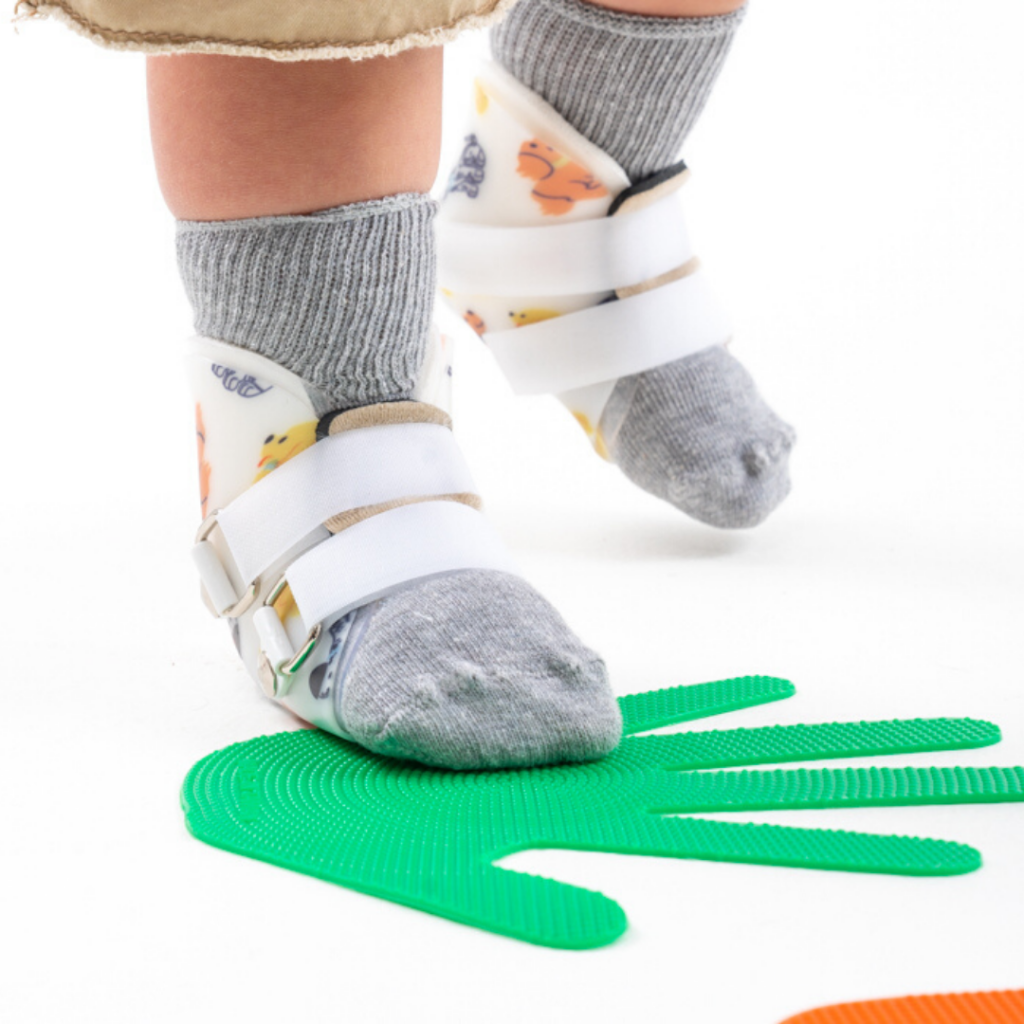3
Mar
2020
Pronation and Your Child – Interview With A Pediatric Physical Therapist

The following is an interview with Dr. Brita DeStefano, a pediatric physical therapist in Denver. You can follow her on Instagram or check out her site Progress Through Play.
Can you tell us a little bit about yourself?
Absolutely. I am a pediatric physical therapist. I have 10 years of experience in the field across various settings, but currently, I own a mobile practice in Denver called Progress Through Play. I serve mostly the birth to five population with a big focus on developmental wellness, prevention, and early intervention. I’ve also just begun offering virtual sessions.

How would you describe pronation to someone who’s never heard of it?
Pronation is referring to a movement of the foot when the ankle joint rolls inward and the arch collapses. There is some degree of pronation that’s normal during the walking cycle, but excessive pronation, or overpronation, puts those muscles of the foot and ankle in an inefficient position and that’s when we would get concerned about it.
What causes pronation?
It could be hereditary, but in children with low muscle tone, a lot of times it’s due to the fact that they also have some ligament laxity. This means that the connecting fibers between the bones are a little bit looser, which leads to more unstable joints, and that can happen at the ankle and cause excessive pronation.

Some pronation is expected. But when should it be a cause for concern?
When a child first starts pulling up and standing on their feet and ankles, they haven’t had any of those weight-bearing forces on them quite yet and they shouldn’t actually have a well-developed arch yet. So, that is normal. I start to get concerned when a child is delayed in their development, or if they are seeming sort of clumsy after they have been walking for a while. For older kids, if they’re slow to run, if you notice their knees knocking together or their ankles rolling in then those would all be signs that parents should reach out to get some assistance.
How can physical therapy help a child who pronates?
As a physical therapist, my first goal is going to be to strengthen all of those small muscles of the foot and ankle and then also work on helping some of the larger stabilizing muscles to work more efficiently. I’m also going to be working on functional balance skills because children who overpronate often struggle with things like having enough balance to go up and down stairs or walking on uneven surfaces. I’ll be addressing all of those things and then also probably using some other techniques such as therapeutic taping, shoe modifications, or orthotics.

What are the signs that a child who pronates would also benefit from orthotics?
Well first of all, definitely if they’re having any pain. Also if they’re having a lot of fatigue or endurance issues, if they’re having a hard time keeping up with their peers, and then if there is a significant developmental delay associated with the overpronation, then I’m almost certainly going to recommend an orthotic.
How can parents help their kids at home?
Parents can give their children some of those balance challenges, like walking over couch cushions or on street curbs. They can also do fun things like animal walks. I suggest bear-walking or walking on their heels like a penguin. They can also just practice walking in different directions like forward, backward and sideways. Other things they can do with their child are practicing jumping or reaching up on their tip-toes.
What would you say to parents who are on the fence about getting help?
I use a car analogy. Say the front tires of your car are out of alignment. Your car is still running and it can get from point A to point B, but you’re putting excessive wear on those tires and you would want to eventually correct that so that you have more longevity in your car. So with overpronation, your kid might still be functioning okay, but there’s excessive wear on those joints. So if we can get the alignment corrected on the front end and there are more normal forces going through the child’s leg and the foot and ankle, it can improve their overall function.
Anything else you’d like to add?
I feel like a lot of parents get told, again, just to wait and see, but definitely reach out if you notice overpronation and ask for second opinions. If your pediatrician doesn’t listen to your concerns, then you can always reach out to a physical therapist or orthotist for a second opinion. So, just follow your parent gut if you think there’s something going on.
Will SMOs help my child's development?
